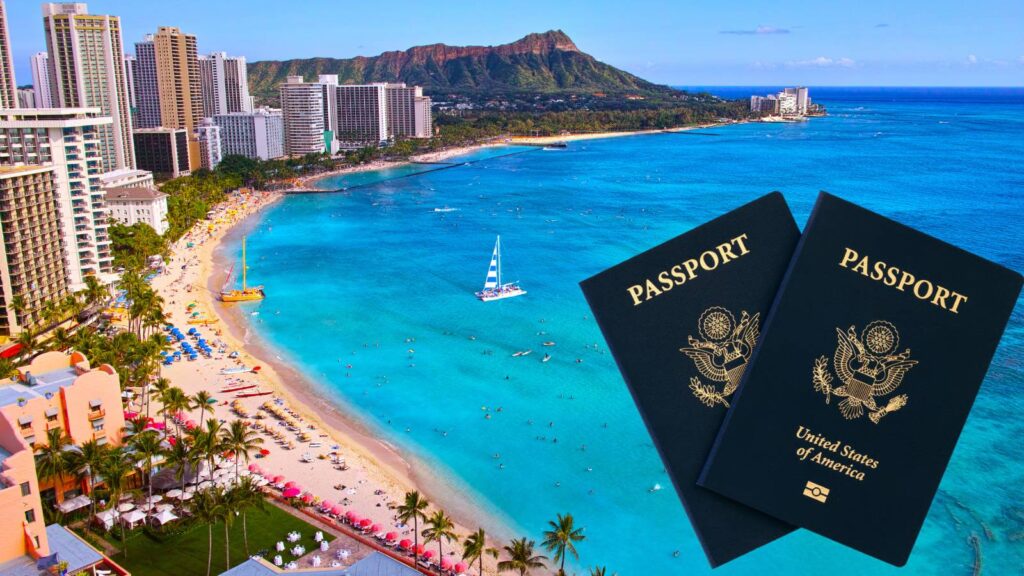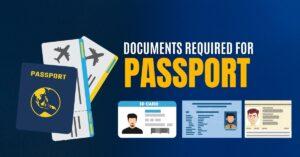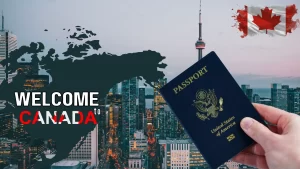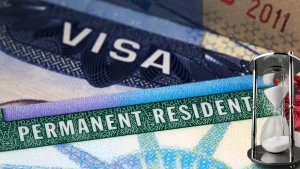Hawaii is one of the most popular vacation spots in the world, attracting millions of travelers every year with its golden beaches, volcanic landscapes, and rich cultural traditions. But when planning a trip to the islands, a common question arises: do you need a passport to go to Hawaii? Confusion often stems from Hawaii’s geographical location.
Things To Do in Oahu, Hawaii : Must-Do Activities You’ll Regret Missing
Unlike most U.S. states, it is located nearly 2,500 miles away from the mainland in the Pacific Ocean. For many, it feels like flying to a foreign country rather than another state. Because of this, travelers—both from within the United States and abroad—are often unsure about what documents are required.
To clear up this confusion, let’s look at the travel rules for different categories of travelers, including U.S. citizens, permanent residents, and international visitors.
Traveling to Hawaii as a U.S. Citizen
U.S. citizen traveling from the mainland United States, you do not need a passport to visit Hawaii. Since Hawaii is one of the 50 U.S. states, your trip is considered domestic travel, just like flying from New York to California or from Texas to Florida.
Where to Book Best Luxury Resorts with Exclusive Discounts in Hawaii
This makes traveling to Hawaii straightforward and hassle-free compared to international trips. However, there are still a few important identification rules and travel guidelines you should know before you go.
Flying from the Mainland U.S.
When traveling by air from the mainland U.S. to Hawaii, you only need a valid government-issued photo ID, such as a state driver’s license, state-issued ID card, or other acceptable identification, to board your flight. A passport is not required in this case because your flight is considered domestic.
Starting May 7, 2025, the Transportation Security Administration (TSA) will begin fully enforcing the REAL ID Act. This means that your driver’s license must be REAL ID-compliant in order to be accepted at airport security.
REAL IDs usually have a star symbol in the corner, so it’s easy to check if your license qualifies. If you don’t have a REAL ID-compliant license by then, you’ll need another acceptable form of identification, such as a valid passport, U.S. military ID, or DHS Trusted Traveler Card (like Global Entry).
Even though you don’t need a passport, many travelers still prefer carrying one as a reliable form of backup identification. It can be especially helpful in case of emergencies or unexpected travel changes, such as a medical situation requiring you to return through a different international route.
Traveling by Cruise Ship
Planning to visit Hawaii by cruise ship, the documentation requirements may vary depending on your cruise itinerary. If traveling on a closed-loop cruise (one that departs and returns from the same U.S. port, such as Los Angeles, San Diego, or Seattle), a passport is generally not required. You will usually just need proof of citizenship, such as a government-issued photo ID along with a certified birth certificate.
Many Hawaiian cruises also include stops at international destinations, such as Canada, Mexico, or even Pacific islands. In such cases, a valid U.S. passport is strongly recommended, and in most cases, required. A passport allows you to disembark at foreign ports, participate in shore excursions, and ensures smooth re-entry into the U.S.
Having a passport while cruising also provides peace of mind. In the event of an emergency—such as needing to fly back to the mainland from an international port stop—a passport will be necessary to board a flight. For this reason, many cruise lines advise passengers to carry one even if it’s technically optional.
Traveling to Hawaii as a U.S. Permanent Resident
U.S. permanent residents (green card holders) do not need a passport to visit Hawaii if traveling directly from the mainland United States. You can fly to Hawaii with your green card and a valid state-issued ID.
However, if you plan to leave the U.S. on your way to Hawaii (such as a cruise that stops in another country), carrying a passport from your home country is recommended for re-entry purposes.
International Travelers Visiting Hawaii
For international travelers, the rules are very different compared to U.S. citizens. If you are not a U.S. citizen or permanent resident, you will always need a valid passport to enter Hawaii, since it is part of the United States. In most cases, you will also need a U.S. visa or an approved travel authorization, depending on your nationality and the purpose of your visit.
Visa Requirements
Most international visitors traveling to Hawaii must obtain a visa before their trip. The most common option for tourism is the B-2 Visitor Visa, which allows travelers to stay for leisure, sightseeing, or visiting friends and family. Business visitors typically apply for a B-1 Visa.
Not all travelers need to apply for a visa in advance. Citizens of countries that participate in the Visa Waiver Program (VWP) can visit Hawaii without a traditional visa for up to 90 days. Instead, they must register online through the Electronic System for Travel Authorization (ESTA) before departure.
ESTA approval is usually quick, but it is important to apply at least 72 hours before your flight to avoid delays. Travelers should also make sure their passport is an e-passport (with a digital chip symbol on the cover), as this is a requirement under the VWP.
Even with ESTA approval, entry into the U.S. is not guaranteed. Final admission is always determined by U.S. Customs and Border Protection (CBP) officers at the port of entry.
Canadian Travelers
Canadian citizens enjoy a special exception when traveling to Hawaii. For short-term visits as tourists, they do not need to apply for a visa. They only need to carry a valid Canadian passport, which must remain valid for the entire duration of their stay.
If Canadian travelers plan to work, study, or stay in Hawaii for an extended period, they may still need the appropriate visa. Canadian permanent residents (who are not Canadian citizens) are not exempt and must follow the standard visa application process, depending on their nationality.
This flexibility makes travel between Canada and Hawaii relatively simple, and as a result, Hawaii is a popular vacation destination for Canadian tourists.
Other International Visitors
A citizen of a country that is not part of the Visa Waiver Program, you must apply for a visa at your nearest U.S. embassy or consulate before traveling. The visa application process typically includes filling out the DS-160 form, paying a processing fee, and attending an in-person visa interview.
During the interview, travelers are usually asked about the purpose of their visit, financial stability, and ties to their home country to ensure they will return after their trip.
This process can take several weeks, so travelers should apply well in advance of their planned travel dates. A valid visa, along with a passport, is required to board your flight and to enter Hawaii through U.S. immigration control.
Traveling to Hawaii from U.S. Territories
Travelers from U.S. territories, such as Puerto Rico, Guam, and the U.S. Virgin Islands, often wonder if they need passports to visit Hawaii. Since these are also U.S. jurisdictions, traveling from them to Hawaii is considered domestic travel. This means you do not need a passport, and the same identification rules apply as they do for mainland travelers.
A traveler from one of these territories makes a stop in another country before arriving in Hawaii—for example, a connecting flight through Panama or Mexico—a passport will be required for the international portion of the journey. Therefore, while direct flights from U.S. territories to Hawaii only require standard government-issued IDs, carrying a passport adds an extra layer of security and flexibility.
Cruise Ship Travelers: Passport Rules You Should Know
Cruising to Hawaii is a dream vacation for many, but the passport requirements can be tricky depending on the type of cruise.
- Closed-Loop Cruises: If you are on a closed-loop cruise that departs from and returns to the same U.S. port and only travels to Hawaii, a passport is generally not required. Passengers can board with a government-issued ID and a birth certificate in many cases.
- Open-Jaw Cruises: If your cruise starts at one port and ends at another, or if it makes stops in international destinations such as Canada, Mexico, or other Pacific islands, then a passport is required. This ensures smooth entry at every stop and prevents issues with re-boarding the ship.
- Why a Passport Is Still Recommended: Even if your cruise doesn’t require it, carrying a passport gives you peace of mind. Medical emergencies, unexpected route changes, or missed departures sometimes require travelers to fly home from an international port. Without a passport, this process becomes complicated and stressful.
Benefits of Carrying a Passport Anyway
Even though U.S. citizens do not need a passport to travel to Hawaii, carrying one can be a smart choice. Emergencies can occur, and airlines may divert flights to foreign airports because of weather or medical issues. Without a passport, you could face major difficulties continuing your journey.
A passport also gives you flexibility. You might decide to extend your vacation and visit another Pacific destination, such as Japan, Fiji, or Tahiti, before heading home. With a passport, you are not limited to domestic travel plans. It also serves as the strongest proof of U.S. citizenship and acts as a reliable backup if you lose your driver’s license or ID during the trip.
Common Misconceptions About Hawaii Travel
One of the biggest misconceptions about Hawaii is that traveling there is like going abroad. Because it is so far from the mainland, many assume a passport is required. However, Hawaii is the 50th state of the United States, and trips there are legally domestic. This means U.S. citizens can fly to Hawaii just as easily as they can fly to another state.
Another misconception is that the rules for Hawaii are the same as those for other island destinations, like the Caribbean or Mexico. This is not true. While those locations require passports, Hawaii does not, because it is part of the U.S.
Tips for Stress-Free Travel to Hawaii
To avoid any last-minute surprises, it is important to prepare ahead of time.
- For U.S. Travelers: Make sure your driver’s license is REAL ID-compliant if you plan to use it for domestic flights starting in 2025. If not, carry an alternative ID such as a U.S. passport, passport card, or military ID.
- For Permanent Residents: Bring your green card and a valid state-issued ID. Consider carrying your home country passport if you plan to travel on a cruise or through other countries.
- For International Travelers: Secure a valid passport well in advance and apply for the necessary U.S. visa or ESTA authorization. Double-check the expiration date of your passport, as most airlines require it to be valid for at least six months beyond your stay.
By following these steps, you can ensure a smooth and stress-free experience traveling to Hawaii.
FAQs
1. Do U.S. citizens need a passport to go to Hawaii?
No. Hawaii is a U.S. state, so U.S. citizens don’t need a passport to travel there. You only need a valid government-issued photo ID, such as a driver’s license.
2. What identification do I need if I’m flying to Hawaii from another U.S. state?
You must carry a valid government-issued photo ID. Starting May 7, 2025, you must also show a REAL ID-compliant license or another acceptable form of identification, such as a passport or military ID, to fly domestically.
3. Do children need a passport to travel to Hawaii?
No. Children traveling within the U.S. don’t need a passport. Airlines usually don’t require ID for children under 18, but you should carry a copy of their birth certificate for verification.
4. Do permanent residents (green card holders) need a passport to go to Hawaii?
No. If you are a permanent resident, you can travel to Hawaii with your green card. You don’t need a passport for domestic travel.
5. Do international travelers need a passport to visit Hawaii?
Yes. If you are not a U.S. citizen or permanent resident, you must carry a valid passport to enter Hawaii.
6. Do international travelers also need a visa to visit Hawaii?
Yes, in most cases. You may need a U.S. visitor visa (B-2). If your country qualifies for the Visa Waiver Program (VWP), you can visit Hawaii without a visa for up to 90 days, but you must apply for ESTA approval before traveling.
7. Can I use a passport card instead of a passport book to travel to Hawaii?
Yes, if you are a U.S. citizen. A passport card works as federal ID for air travel within the U.S., including Hawaii. International travelers, however, must carry a passport book.
8. Should U.S. citizens carry a passport even if it’s not required?
Yes. A passport gives you flexibility. If your flight diverts to another country or if you decide to visit a nearby destination like Japan or Fiji, you can continue your travel without issues.
9. What happens if I lose my ID before flying to Hawaii?
TSA can still verify your identity through additional checks and may allow you to board. Carrying a passport makes the process easier and acts as a reliable backup.
10. Can cruise passengers visit Hawaii without a passport?
Yes, if you are a U.S. citizen on a closed-loop cruise that starts and ends at the same U.S. port. If your cruise stops at foreign ports, you need a passport. International travelers always need a passport.






